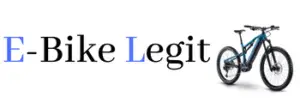Electric bikes, also known as e-bikes, have become increasingly popular in recent years as a sustainable and efficient mode of transportation. Not only do they provide a convenient and eco-friendly alternative to traditional gas-powered bikes, but they also offer a host of benefits to riders.
One of the biggest benefits of electric bikes is that they provide a boost of power when needed, making it easier to tackle hills and headwinds. This power also allows riders to maintain a faster speed, making it a great option for commuters or recreational riders looking to cover more distance in less time. Additionally, electric bikes can also provide a workout option for individuals with physical limitations, allowing them to enjoy the benefits of cycling without strain.

However, power and speed are not the only benefits of electric bikes. They also offer a cost-effective alternative to cars, as they require less maintenance and no fuel. They also emit no emissions, making them a cleaner option for the environment. Furthermore, they can also be a great option for those who want to get around without the hassle of finding parking. Overall, electric bikes offer a variety of benefits for riders, and it’s no wonder that they are becoming a more common sight on the streets.
Understanding Electric Bike Components
Electric bikes are becoming increasingly popular as a sustainable and efficient mode of transportation. However, to truly get the most out of your electric bike, it’s important to understand its components and how they work together to provide power and speed.
Electric Bike’s Motor and Battery
The heart of any electric bike is its motor and battery. The motor is responsible for converting electrical energy into mechanical energy, which propels the bike forward. Electric bike motors come in a variety of types and sizes, with the most common being brushless DC motors and geared motors.
The battery, on the other hand, stores the electrical energy that powers the motor. Electric bike batteries are typically lithium-ion or lead-acid, with lithium-ion being the most common due to its long lifespan and high energy density.
How the Motor and Battery Work Together to Provide Power and Speed
The motor and battery work together to provide power and speed to the electric bike. The battery stores the electrical energy, and the motor converts it into mechanical energy to propel the bike forward. The amount of power and speed an electric bike can achieve is determined by the motor’s power rating and the battery’s capacity.
Understanding Electric Bike Components for Increasing Power and Speed
Understanding the components of your electric bike is essential for increasing its power and speed. By understanding how the motor and battery work together, you can make informed decisions about upgrading or replacing them. For example, if you want more power and speed, you may consider upgrading to a larger, more powerful motor or a higher-capacity battery.
Additionally, regular maintenance and cleaning of the electric bike components can also improve the bike’s performance. Keeping the motor and battery in good working condition can help prolong their lifespan and ensure they’re operating at their best.
However, understanding the electric bike’s motor and battery, and how they work together, is essential for getting the most out of your electric bike. By upgrading or replacing components, regular maintenance, and keeping the bike clean, you can increase the power and speed of your electric bike.
Upgrading the Electric Bike Battery
When it comes to increasing power and speed on an electric bike, upgrading the battery is a crucial step. The battery is the heart of an electric bike, providing the power that makes it run. Understanding the different types of electric bike batteries and how to select the right one for your bike can make a big difference in your riding experience.
Different Types of Electric Bike Batteries
There are several types of electric bike batteries available, each with its own unique characteristics and benefits. The most common types of electric bike batteries include:
- Lead-acid batteries: These are the most traditional type of electric bike battery and are the least expensive option. However, they are also the heaviest and have the shortest lifespan.
- Nickel-cadmium (NiCad) batteries: These batteries are slightly more expensive than lead-acid batteries, but they are also lighter and have a longer lifespan.
- Nickel-metal hydride (NiMH) batteries: These batteries are more expensive than NiCad batteries, but they are also lighter and have an even longer lifespan.
- Lithium-ion batteries: These batteries are the most expensive option, but they are also the lightest and have the longest lifespan.
How to Select the Right Battery for Your Electric Bike
When selecting a new battery for your electric bike, there are several factors to consider. The most important factor is the voltage of the battery. Electric bike batteries typically come in 36V, 48V, and 52V options. The higher the voltage, the more power and speed the battery will provide.
Another important factor to consider is the capacity of the battery. The capacity is measured in amp-hours (Ah) and represents the amount of energy the battery can store. A higher-capacity battery will provide more power and a longer lifespan.
Tips for Maintaining and Prolonging the Life of Your Electric Bike Battery
To ensure your electric bike battery lasts as long as possible, it’s important to take proper care of it. Here are some tips for maintaining and prolonging the life of your electric bike battery:
- Store your electric bike battery in a cool, dry place when not in use.
- Charge your electric bike battery regularly, even when you’re not using it.
- Avoid overcharging or over-discharging your electric bike battery.
- Clean the battery terminals regularly to ensure a strong connection.
- Use the proper charger for your electric bike battery.
Following these tips, you can extend the life of your electric bike battery and ensure that you’re getting the most power and speed out of your bike.
Upgrading the Electric Bike Motor
The electric bike motor is the heart of an e-bike, providing the power that propels you forward. Upgrading the motor can significantly improve the performance and power of your electric bike. In this section, we’ll take a closer look at the different types of electric bike motors and how to select the right one for your needs. We’ll also provide tips for maintaining and prolonging the life of your electric bike motor.
Different Types of Electric Bike Motors
There are three main types of electric bike motors: hub motors, mid-drive motors, and friction drive motors.
- Hub motors are located in the front or rear wheel hub and provide power to the wheel directly. They are easy to install but can add weight to the bike and make it less efficient.
- Mid-drive motors are located in the middle of the bike, usually in the bottom bracket area. They provide power to the chain, making them more efficient and easier to pedal.
- Friction drive motors are mounted on the rear wheel and use friction to turn the wheel. They are lightweight and easy to install but can wear out quickly.
How to Select the Right Motor for Your Electric Bike
When selecting a motor for your electric bike, consider the following factors:
- Power: The motor’s power output is measured in watts (W) or horsepower (hp). A higher power output means more speed and acceleration, but also a higher price tag.
- Efficiency: Some motors are more efficient than others, which means they can provide more power with less energy.
- Location: Consider where you want the motor to be located on your bike. Hub motors are easy to install, but mid-drive motors are more efficient.
Tips for Maintaining and Prolonging the Life of Your Electric Bike Motor
- Keep the motor clean: Regularly clean the motor to remove any dust or debris that could damage it.
- Keep the motor lubricated: Use the recommended lubricant to ensure smooth operation and prolong the life of the motor.
- Check the motor’s temperature: Overheating can damage the motor, so keep an eye on the temperature and take a break if it becomes too hot.
- Follow the manufacturer’s instructions: Always follow the manufacturer’s instructions for maintaining and servicing your electric bike motor.
Upgrading the electric bike motor can be a great way to improve the performance and power of your electric bike. With the right motor, you can enjoy faster speeds, more acceleration, and a more efficient ride. Remember to maintain and care for the motor properly to prolong its life.
Improving Electric Bike Efficiency
To improve the efficiency of your electric bike, regular cleaning, lubrication, and maintenance of all the moving parts are essential. Keep your tires properly inflated and brakes in good working condition. Additionally, reducing drag and resistance while riding can increase the power and speed of your ride. This can be achieved by using aero bars or handlebars, which help to reduce wind resistance, or by riding in a more upright position.
Another tip for reducing drag and resistance is to make sure that your bike is properly tuned and adjusted. This means that your tires should be properly inflated, your brakes should be working properly, and your gears should be properly adjusted.
Regular maintenance and cleaning are essential for keeping your electric bike in good working condition and improving its efficiency. It is also important to take your electric bike in for professional service on a regular basis. This can help to identify and fix any potential problems before they become major issues, ensuring your e-bike runs at its best.
